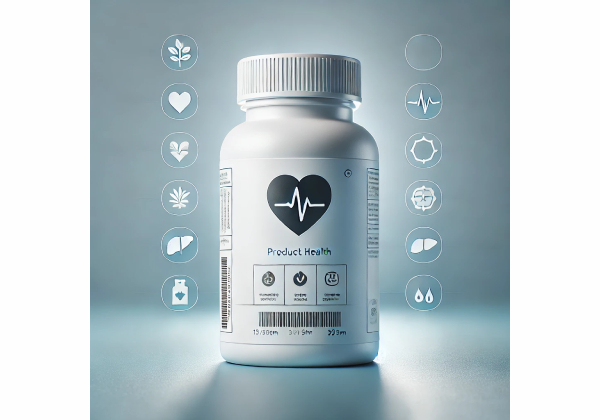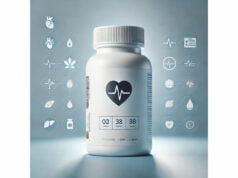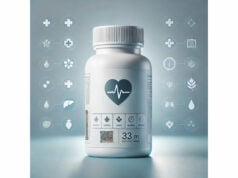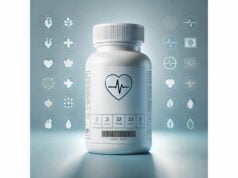
Korsuva (difelikefalin) is the first peripherally selective kappa-opioid receptor (KOR) agonist approved to reduce moderate to severe itching in adults on hemodialysis. If you or someone you care for struggles with chronic kidney disease–associated pruritus (CKD-aP), you know it’s more than a nuisance: itch can hijack sleep, mood, and day-to-day functioning. Korsuva targets the sensory and immune pathways that amplify itch signals without typical “central opioid” effects. It’s administered intravenously by a healthcare professional right after each hemodialysis session, and its benefits have been demonstrated in randomized controlled trials. While it’s not a cure for the underlying kidney disease, many patients experience meaningful symptom relief and improvements in quality-of-life scores. As with any prescription therapy, you’ll want to understand who it helps most, how it’s given, realistic expectations, and how to manage side effects like dizziness or diarrhea. This guide walks you through the evidence, dosing details, precautions, and practical tips so you can have an informed conversation with your nephrology team.
Quick Overview
- Reduces hemodialysis-related itch intensity and improves quality-of-life scores in many adults.
- Usual regimen is 0.5 micrograms per kilogram (mcg/kg) IV after each hemodialysis session, three times weekly.
- Common effects include dizziness, somnolence, nausea, diarrhea, and gait disturbance; most are mild to moderate.
- Avoid if not on hemodialysis; not studied in peritoneal dialysis and not recommended there.
- Use caution with sedating medicines (e.g., opioids, antihistamines, sleep aids) that can compound drowsiness or confusion.
Table of Contents
- What is Korsuva and how it works
- Does Korsuva really reduce itch
- Who should consider Korsuva
- How to use Korsuva correctly
- Side effects: what to expect
- Interactions, precautions, and special cases
What is Korsuva and how it works
Korsuva is the brand name for difelikefalin, a selective kappa-opioid receptor agonist designed to act mainly outside the brain and spinal cord (that is, it’s “peripherally restricted”). That design choice matters. Traditional opioids primarily target mu-opioid receptors and readily cross into the central nervous system, where they can cause euphoria, respiratory depression, dependence, and other risks. Difelikefalin’s selectivity for kappa receptors and its limited central penetration aim to reduce itch signaling and neuro-immune crosstalk while minimizing typical opioid-like central effects.
Why is itch such a problem in dialysis? CKD-associated pruritus arises from a complex mix of peripheral nerve hyperexcitability, dysregulated opioid receptor balance (kappa versus mu), microinflammation, and uremic toxin effects. In hemodialysis, circulating pruritogens, immune mediators, and peripheral neurons interact to amplify the sensation of itch and its downstream consequences—scratching, sleep fragmentation, mood symptoms, and reduced health-related quality of life.
At the cellular level, kappa-opioid receptors are present on peripheral sensory neurons and certain immune cells. When difelikefalin binds those receptors, it appears to dampen itch signal transmission and modulate inflammatory contributors. Clinically, patients describe fewer “flare moments,” less nighttime awakening from itch, and reduced need for additional antipruritic measures. These subjective changes are captured by validated scales used in trials: the Worst Itching Intensity Numerical Rating Scale (WI-NRS), the 5-D Itch scale, and the dermatology-focused Skindex-10.
Korsuva’s indication is specific: it’s for adults on hemodialysis with moderate to severe CKD-aP. It is not approved for people with mild, occasional itch, for those not receiving dialysis, or for those on peritoneal dialysis. The medicine is given intravenously into the venous line at the end of each hemodialysis treatment, three times per week, to align with dialysis timing and to avoid removal of drug by the dialyzer.
In practice, Korsuva is part of a multimodal plan. Many patients will still benefit from skin care measures (fragrance-free emollients, gentle cleansers), optimization of dialysis adequacy, and management of comorbidities like hyperparathyroidism or anemia. Some may continue non-sedating antihistamines for histamine-mediated symptoms or topical agents for focal itch patches. Your nephrology team will tailor that plan based on your symptom pattern and response over the first few weeks.
Finally, expectations: improvement is often noticeable within the first month and can continue over 6 to 12 weeks. Not everyone responds, and some stop due to side effects or insufficient benefit. Understanding the evidence helps frame those expectations—which we cover next.
Does Korsuva really reduce itch
Short answer: in randomized trials, many hemodialysis patients receiving Korsuva experienced clinically meaningful reductions in itch intensity and better quality-of-life scores versus placebo. The most robust data come from phase 3 studies in North America and internationally, followed by confirmatory findings in Japanese patients and pooled evidence in meta-analyses.
How “meaningful” is the change? Trials used the WI-NRS, a 0–10 scale anchored to “worst itch over the past 24 hours.” A drop of at least 3–4 points is commonly regarded by clinicians and patients as a tangible improvement—fewer hours spent scratching, less disrupted sleep, less irritability during the day. In one pivotal trial, about half of treated patients achieved a decrease of 3 or more points, notably higher than the placebo group. When the bar was raised to a ≥4-point improvement at 12 weeks, roughly two in five difelikefalin-treated patients met that threshold, again outpacing placebo. Quality-of-life instruments (5-D Itch and Skindex-10) likewise favored treatment, reflecting real-world benefits beyond a number on a scale.
The magnitude of benefit is clinically relevant but not uniform. Several patterns emerged:
- Baseline severity matters. Patients starting with higher WI-NRS scores (for example, 7–9) had more “room” to improve and were more likely to perceive relief as life-changing.
- Sleep improves early. Some patients report fewer awakenings in the first weeks even before daytime itch fully subsides, which can lift energy and mood.
- Responder timing varies. A subset are “early responders” within the first 2–4 weeks; others need the full 6–12 weeks before the benefit is clear. This shapes how long clinicians often trial therapy before judging it.
- Durability during treatment. Benefits generally persist while dosing continues three times weekly after dialysis. Stopping the drug typically allows symptoms to creep back over days to weeks.
Is it better than everything else? Head-to-head comparisons against gabapentin, pregabalin, or nalfurafine (available in some countries) have not been completed. Indirect comparisons suggest Korsuva’s responder rates are competitive, and its peripherally focused mechanism offers a distinct option when GABA-analog side effects, drug interactions, or limited efficacy are concerns.
What about safety signals in the trials? Gastrointestinal symptoms and central nervous system effects (dizziness, somnolence, mental status changes, gait disturbances) were the most common differences from placebo. Most events were mild to moderate and tended to lessen over time, but they can be bothersome—particularly in older adults or those on other sedating agents. Serious adverse events occurred at similar rates to placebo, with no specific organ toxicity pattern emerging in the registration program.
Lastly, broader evidence reviews pooling randomized trials have reinforced a consistent reduction in itch scores and improvements in patient-reported outcomes, while also quantifying a modest increase in overall adverse events compared with placebo but no clear increase in serious events or mortality. That synthesis matches what clinicians see: meaningful relief for many patients, balanced by manageable side effects and a need to monitor for dizziness or GI upset in the early weeks.
Who should consider Korsuva
Korsuva is intended for adults undergoing maintenance hemodialysis who report moderate to severe CKD-associated pruritus—often defined by a weekly mean WI-NRS of >4 with meaningful impact on sleep or daily life. It’s most compelling if:
- Itch persists despite basics. You’ve optimized emollients, avoided irritants (fragrances, wool), and addressed secondary contributors such as xerosis, iron deficiency, or hyperphosphatemia; yet itch remains daily or near-daily.
- Sedating meds are a poor fit. You’ve had limited benefit or intolerable sedation from agents like sedating antihistamines or off-label gabapentinoids, or you’re at high fall risk where added sedation would be concerning.
- Quality of life is impaired. You’re losing sleep, scratching until skin breaks, or cutting back on activities because of itch.
Who should not receive Korsuva?
- Not on hemodialysis. Korsuva’s approved use is specific to adults on HD; it has not been established for non-dialysis CKD or kidney-transplant recipients.
- Peritoneal dialysis (PD). It hasn’t been studied in PD and is not recommended for that population.
- Severe hepatic impairment. Data are lacking; clinicians generally avoid use here.
- Active, untreated causes of itch other than CKD-aP. Scabies, cholestatic liver disease, uncontrolled hyperparathyroidism, or severe eczema should be addressed directly because CKD-aP–focused therapy may underperform.
Special populations:
- Older adults (≥65 years). Benefit is similar, but somnolence and dizziness occur more often. Fall-prevention strategies and medication review are key.
- Pregnancy and breastfeeding. Safety data are limited. Because CKD-aP can be severe, decisions are individualized with maternal-fetal medicine and nephrology input, weighing symptom control against unknowns.
- Neurologic disease or cognitive impairment. Extra caution is warranted due to susceptibility to delirium or gait instability from sedating effects.
- Concurrent sedatives. If you’re taking opioids, benzodiazepines, sedating antihistamines, or sleep aids, the combined effect on alertness and balance may be greater. Dose timing and de-prescribing opportunities should be reviewed.
A practical way to decide is to align goals: if itch is a top complaint, sleep is frayed, and safer measures have fallen short, Korsuva offers a mechanism-specific therapy. Set a trial period (often 6–12 weeks), monitor symptom scores and side effects, and agree on clear stop/continue criteria with your dialysis team.
How to use Korsuva correctly
Route and timing. Korsuva is administered as a small intravenous bolus into the venous line after each hemodialysis session. Giving it post-dialysis matters because difelikefalin is removed by the dialyzer; dosing before or during the treatment would reduce exposure. Your dialysis nurse or clinician will administer the dose; there is no self-injection at home.
Standard dose. The recommended dose is 0.5 micrograms per kilogram (mcg/kg) three times per week (typically Mon-Wed-Fri or Tue-Thu-Sat), matched to your dialysis schedule. It’s weight-based and typically rounded to a convenient injection volume based on a dosing table. For example, a 70-kg patient would receive ~0.7 mL of the 50 mcg/mL solution (which equals 35 mcg of difelikefalin). The product is supplied as 65 mcg in 1.3 mL (50 mcg/mL) single-dose vials. The clinical team draws only what’s needed for your weight; any remainder is discarded.
Missed dialysis session. If a scheduled dialysis treatment is missed, you simply resume Korsuva after the next hemodialysis session; you do not “double up” or take it off-schedule.
Concomitant care. Many centers encourage basic skin care alongside Korsuva: liberal use of fragrance-free moisturizers, lukewarm showers, and avoiding known personal triggers. For focal “hot spots,” a short course of topical pramoxine, menthol, or capsaicin may be added. If you’re using sedating agents at night, your team may taper them once Korsuva begins to reduce cumulative sedation risk.
Response tracking. Because itch is subjective, structured tracking helps. Consider:
- Record a daily WI-NRS (0–10) at bedtime for the first 4–6 weeks.
- Note awakenings from itch and any scratching-related skin breaks.
- Capture side effects by day, especially dizziness, sleepiness, and GI symptoms.
Bring this log to dialysis rounds; it guides decisions to continue, pause, or reassess contributing factors (e.g., phosphorus control, dry skin).
When to expect improvement. Some patients feel less nighttime itch within 2–4 weeks, with continued gains through 6–12 weeks. If there’s no noticeable change by week 6, discuss whether to continue to week 12 or consider alternatives.
Driving and machinery. Until you know how you feel after treatment days, avoid driving or hazardous tasks following your post-dialysis dose. Fatigue from dialysis and medication effects can both impact reaction time and balance.
Storage and preparation (clinic-based). The solution is clear and colorless. Staff inspect vials, prepare the syringe near dosing time, and either administer during the rinse-back of the circuit or immediately after with a saline flush—following standardized protocols that ensure consistent exposure.
Stopping treatment. Korsuva can be discontinued if side effects persist or benefits are insufficient. It’s not associated with dependence, and no withdrawal syndrome is expected; symptoms of itch typically return to their prior pattern after stopping.
Side effects: what to expect
Every active therapy carries a trade-off. With Korsuva, the most common issues are mild to moderate and cluster into two categories: gastrointestinal and central nervous system–related effects. Knowing what to watch for—and how to manage it—helps most patients complete a fair therapeutic trial.
Common (generally ≥2%)
- Dizziness or lightheadedness. Most frequently reported in the first weeks. It can be compounded by post-dialysis fatigue and fluid shifts.
- Somnolence (sleepiness). Often transient; plan for rest on treatment days and avoid other sedatives when possible.
- Nausea, vomiting, or diarrhea. Usually self-limited; taking small, bland snacks after dialysis and hydration guidance from your team can help.
- Gait disturbance or unsteadiness. Falls are a concern in older adults—use assistive devices and rise slowly after treatments.
- Headache. Typically mild and manageable with non-sedating analgesics approved by your clinician.
Less common but important
- Mental status changes or confusion. If you or caregivers notice new confusion, disorientation, or marked drowsiness, contact the dialysis unit promptly; sedating co-medications may need adjustment.
- Electrolyte shifts (e.g., hyperkalemia). Serious electrolyte problems were not a typical direct effect of Korsuva in trials, but labs are monitored routinely in dialysis care.
- Allergic reactions. Rare. Report rash, swelling, or breathing difficulty immediately.
Practical mitigation strategies
- Review your medication list for sedatives (opioids, benzodiazepines, “PM” antihistamines, gabapentin/pregabalin, sleep aids). Your team may reduce or space them to avoid stacking effects.
- Fall prevention: wear supportive footwear to and from dialysis, use handrails, and consider a ride home on treatment days until you see how you respond.
- GI comfort: small, frequent meals and anti-nausea strategies your clinician recommends; report persistent diarrhea or vomiting to avoid dehydration.
- Monitor patterns: note whether symptoms cluster on specific dialysis days or with certain co-medications.
When to call promptly
- Fainting, near-falls, new confusion, severe or persistent vomiting/diarrhea, or any symptom that feels out of proportion to your usual post-dialysis fatigue.
Dependence and withdrawal
Unlike centrally acting mu-opioids, difelikefalin is not associated with euphoria, reinforcement, or a withdrawal syndrome. If stopped, itch symptoms typically recur over days to weeks to their pre-treatment baseline.
Overall, the safety profile is considered manageable for most individuals when supervised in a dialysis setting, with educated attention to sedation and balance in the early phase of therapy.
Interactions, precautions, and special cases
Drug interactions
Difelikefalin is not metabolized by cytochrome P450 enzymes and has minimal transporter involvement, so classic metabolic interactions are unlikely. However, pharmacodynamic interactions matter: combining Korsuva with other central nervous system depressants (opioid pain relievers, benzodiazepines, sedating antihistamines, certain sleep medications, some anti-nausea agents) can increase dizziness, somnolence, and confusion. Your clinician may taper some of these or adjust timing around dialysis days.
Hepatic and renal considerations
- Liver impairment: Mild to moderate hepatic impairment does not meaningfully change exposure, but severe hepatic impairment has not been studied, and use is generally not recommended.
- Kidney function: Korsuva is specifically indicated for adults on hemodialysis and is administered after each session because it is removed by the dialyzer. It is not recommended in peritoneal dialysis due to lack of data.
Older adults
Patients aged ≥65 years can experience higher rates of somnolence and dizziness. Start with careful fall-prevention counseling, reassess other sedatives, and consider home support on treatment days. Benefit is otherwise comparable.
Pregnancy and lactation
There are insufficient data in pregnant or breastfeeding patients to define risk. If symptoms are severe, clinicians weigh potential maternal benefit against unknown fetal or neonatal risks and may prioritize non-sedating measures first. Shared decision-making with maternal-fetal medicine is key.
Driving and operating machinery
Advise against driving or operating hazardous machinery after doses until the individual response is known. Many patients schedule chores or transportation to avoid risky activities post-dialysis.
Dermatologic conditions and differential diagnosis
CKD-aP often coexists with xerosis and secondary excoriations. Flares of eczema, scabies, cholestatic pruritus, or medication-related rashes can masquerade as “worsening CKD itch.” If itch changes character (e.g., becomes markedly localized, blistering, or associated with jaundice), ask for a targeted evaluation; Korsuva won’t resolve those distinct causes.
Concomitant non-pharmacologic strategies
- Fragrance-free emollients within minutes after bathing.
- Lukewarm water and gentle cleansers.
- Short fingernails and nighttime mitts if scratching is severe.
- Optimize dialysis adequacy, phosphorus control, and anemia management.
- Consider light-based therapies (narrowband UVB) in specialty clinics when available and appropriate.
Stopping or switching
If Korsuva provides partial benefit with tolerable side effects, many teams continue it and trim other sedating agents. If benefits are unclear by 6–12 weeks or side effects are limiting, options include discontinuation, trials of gabapentin/pregabalin (careful dosing post-dialysis), topical therapies for focal symptoms, or referral for phototherapy where feasible.
In summary, Korsuva fits best when itch is persistent and life-disrupting despite supportive measures, when sedation from other agents is problematic, and when a monitored, post-dialysis IV therapy is practical within your unit’s workflow.
References
- KORSUVA (difelikefalin) Label 2021 (Prescribing Information)
- A Phase 3 Trial of Difelikefalin in Hemodialysis Patients with Pruritus 2020 (RCT)
- Difelikefalin for Hemodialysis Patients with Pruritus in Japan 2023 (RCT)
- The efficacy and safety of difelikefalin for pruritus in hemodialysis patients: a systematic review and meta-analysis of randomized controlled trials 2024 (Systematic Review)
- Kapruvia | European Medicines Agency (EMA) 2024 (Regulatory Overview)
Disclaimer
This guide is informational and does not replace personalized medical advice, diagnosis, or treatment. Korsuva is a prescription medication for adults on hemodialysis; decisions about its use should be made with your nephrologist based on your symptoms, medical history, and other medicines. If you have sudden confusion, severe dizziness, fainting, or signs of an allergic reaction after treatment, seek medical attention immediately.
If this article helped you, please consider sharing it on Facebook, X (formerly Twitter), or your preferred platform, and follow us for future updates. Your support helps us continue creating clear, evidence-based guides.










